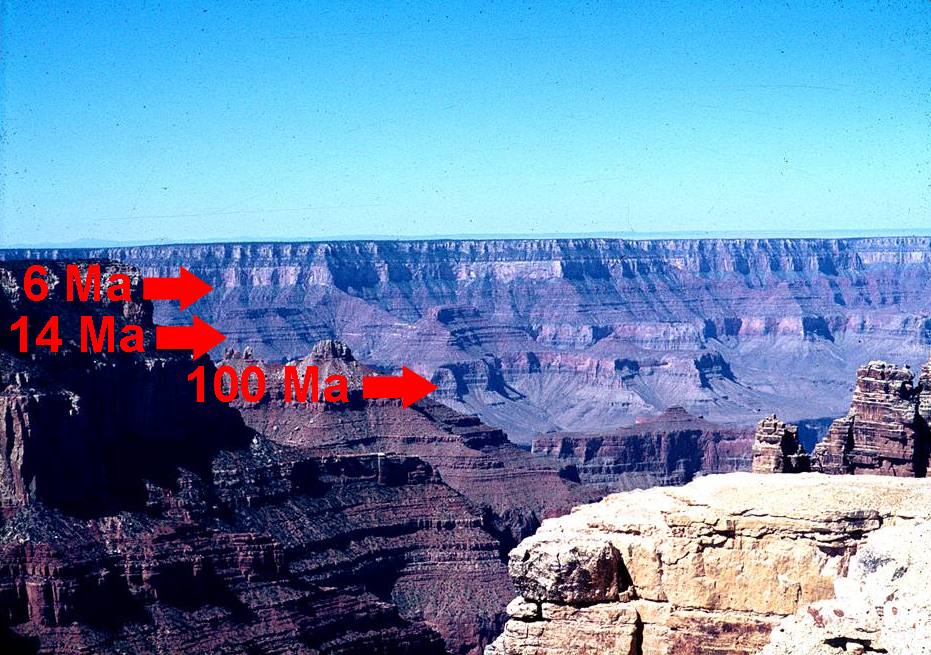©Copyright 2018 GEOSCIENCE RESEARCH INSTITUTE
11060 Campus Street • Loma Linda, California 92350 • 909-558-4548

Did life slowly evolve over billions of years as suggested by evolutionary theory, or was it created recently by God, just a few thousand years ago as indicated in the Bible? The flat gaps in the sedimentary rocks of the earth provide scientific data that favor the biblical model.
In the sedimentary layers of the earth, such as those of the Grand Canyon (see fig. 1), there are major gaps between some of the flat layers called flat gaps. One can tell there is such a gap because parts of the geologic column that are found elsewhere on the earth are missing at the gaps. However, the layers just above and below the gap lie flat right on top of each other and do usually not show any sign of modification or change in their aspect that could help identify the gap. Only by careful comparisons of sediments, fossils, and other factors beyond the gaps, can you tell that there is a gap. Geologists call these large flat gaps paraconformities. The duration of the gap is assumed, in accord with the standard geologic time scale, to sometimes represent hundreds of millions of years. The flat gaps are found among sedimentary layers over the earth and can extend over major parts of continents. In summary, the sedimentary record presents us with two important features: there are gaps and quite a number of them are flat.

The flatness of these widespread gaps especially challenges the long geologic ages. Geologists who believe in long evolutionary time assume that the reason for a flat gap is that there has been no deposition of sediments over a flat region for many millions of years. On the other hand, if there is no deposition, erosion and weathering will be expected, and erosion tends to be highly irregular as seen now on the carved surfaces of our continents.
In spite of their proposed long ages of formation, the flat gaps show very little or no weathering or erosion weathering or erosion of the underlying layers. This clearly indicates a different mechanism is responsible for their formation and is what would be expected in the context of rapid deposition during the astonishing Genesis Flood described in the Bible.
FOR FURTHER STUDY
1. Roth AA. 1998. Origins: Linking Science and Scriptures. Hagerstown, Maryland: Review and Herald Publishing Association, p 222-232.
2. Roth AA. 2009. “Flat Gaps” in sedimentary rock layers challenge long geologic ages. Journal of Creation 23(2):76-81.
3. For illustrations and videos see sciencesandscriptures.com, discussion No. 16, and video 13 of the WHERE IS TRUTH series.
________________________________________________________________
Ariel Roth, PhD
Loma Linda, CA